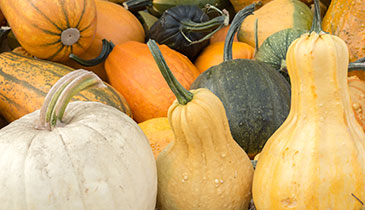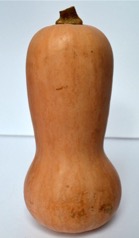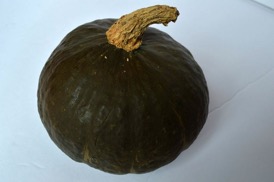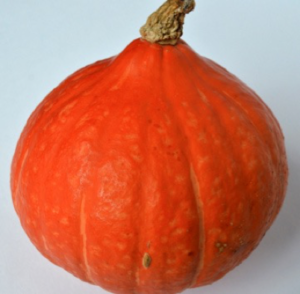 Squash season is here! In the US, I often see acorn squash as the most common variety, but I actually find that to be the least flavorful of the squashes. I’d like to introduce people to a variety of other squash types! Then you can get creative with your squash and enjoy the many flavors of this incredible harvest vegetable.
Squash season is here! In the US, I often see acorn squash as the most common variety, but I actually find that to be the least flavorful of the squashes. I’d like to introduce people to a variety of other squash types! Then you can get creative with your squash and enjoy the many flavors of this incredible harvest vegetable.
HOW TO PICK A SQUASH
Pick the densest and heaviest squash for its size. Squashes tend to be sweeter after the first frost so we’re coming up on the perfect time to enjoy these vegetables! There are some spring varieties of squash, such as butternut, but this time of year, squash is particularly sweet.

Butternut: This familiar bell shaped squash has orange flesh and beige skin.
Kabocha: This is my favorite type of squash! It has more of a pumpkin shape, with green or sometimes orange skin. The flesh has a very meaty texture and the skin is delicious! I simply chop a kabocha into thick wedges and then steam. It’s so good that it can be served by itself!

Buttercup: Despite the similarity in name, this squash actually looks more similar to the kabocha squash than the butternut. You can tell them apart by the appearance of the large, flat knob on the bottom of the Buttercup squash. It looks like it has a belly button!
Hokkaido: This squash looks like a pointy pumpkin. It’s orange with a small green circle around its bottom stem.
Hokkaido: This squash looks like a pointy pumpkin. It’s orange with a small green circle around its bottom stem.

Delicata: This squash is usually yellow with green stripes on the ridges. It’s shaped like a long sphere but has scalloped edges, so the cross section looks like a flower. Delicata is very sweet! It’s great for cutting into circles, roasting with olive oil, and eating plain! You can put little fillings on the inside of the circles too. Once the seeds are removed, the rings are like little fillable donuts. They are quite beautiful.
PREPARING SQUASH
Many people automatically peel squash, but the skin on most varieties is edible and delicious! Sometimes, butternut squash will have skin that is too tough to eat. I’ll often peel butternut if I’m making something creamy, such as soup. It should be noted that acorn squash has tough skin that you can’t eat, so go ahead and peel it before cooking.
THE SWEETNESS OF SQUASH
I use squash in place of pumpkins in all my recipes since pumpkins are not nearly as sweet as squashes. You can tell how sweet your squash will be when you cut it open by the color of the flesh. The darker the flesh is, the sweeter it will be. A lighter orange will be slightly less sweet than a darker orange.
Tip for enhancing the sweetness: Sprinkle soy sauce on the squash before steaming it. This might sound a little counterintuitive, but the soy sauce will run off during steaming and the salt that’s left behind will bring out all the sweet flavors of the squash!
STEAMING
Steamed Butternut Squash with sage.
Put the squash in a steamer basket and place it in a pot with enough water to boil, but not so much that the water covers the basket. Sprinkle in soy sauce and cover the pot with the lid. Bring to a boil. After 10 or 15 minutes, check the squash. It should be soft through.
Once steamed, you can make purees or use it in chunks. You can make it savory by adding thyme, sage, or any other spices you love! You can go sweet by adding pumpkin pie spices, such as nutmeg, cinnamon, ginger, cardamom, and clove.
ROASTING
Pureed Butternut Squash with Sage.
You can also bake squash, which is a great option if you’d like to add fillings. To do this, preheat the over to 400° Fahrenheit, cut the squash in half, scoop out the seeds, and rub olive oil or other neutral tasting oil over the entire thing, including the skin. Sprinkle it with salt and pepper and place it flesh side down on a baking sheet. I often add a few tablespoons of water to the tray to help it steam a little. Bake for 30 to 45 minutes, depending of the type of squash and whether or not it is stuffed. You want it to be soft through.
You can add any of you favorite stuffing to squash! Nuts and dried fruit make a great sweet dish, but you can easily go savory as well. Vegetables, herbs, meats, beans, or cheese all make great stuffing. Get creative and let us know what you love to stuff squash with! With sweeter varieties of squash, you don’t need to add butter and brown sugar to make it taste good. They are naturally so sweet already!
Keep in mind that roasting will bring out caramelized flavors, so it will taste differently than a steamed squash. If you roast it without stuffing, you’ll want to place it flesh side down on the baking tray, but if it is stuffed, it will face up.
OTHER COOKING METHODS
You can use a pressure cooker or slow cooker to prepare squash. To do so, follow the instructions on your device and then season any way you choose. I find steaming to be the quickest, easiest, and most versatile method for cooking though.




